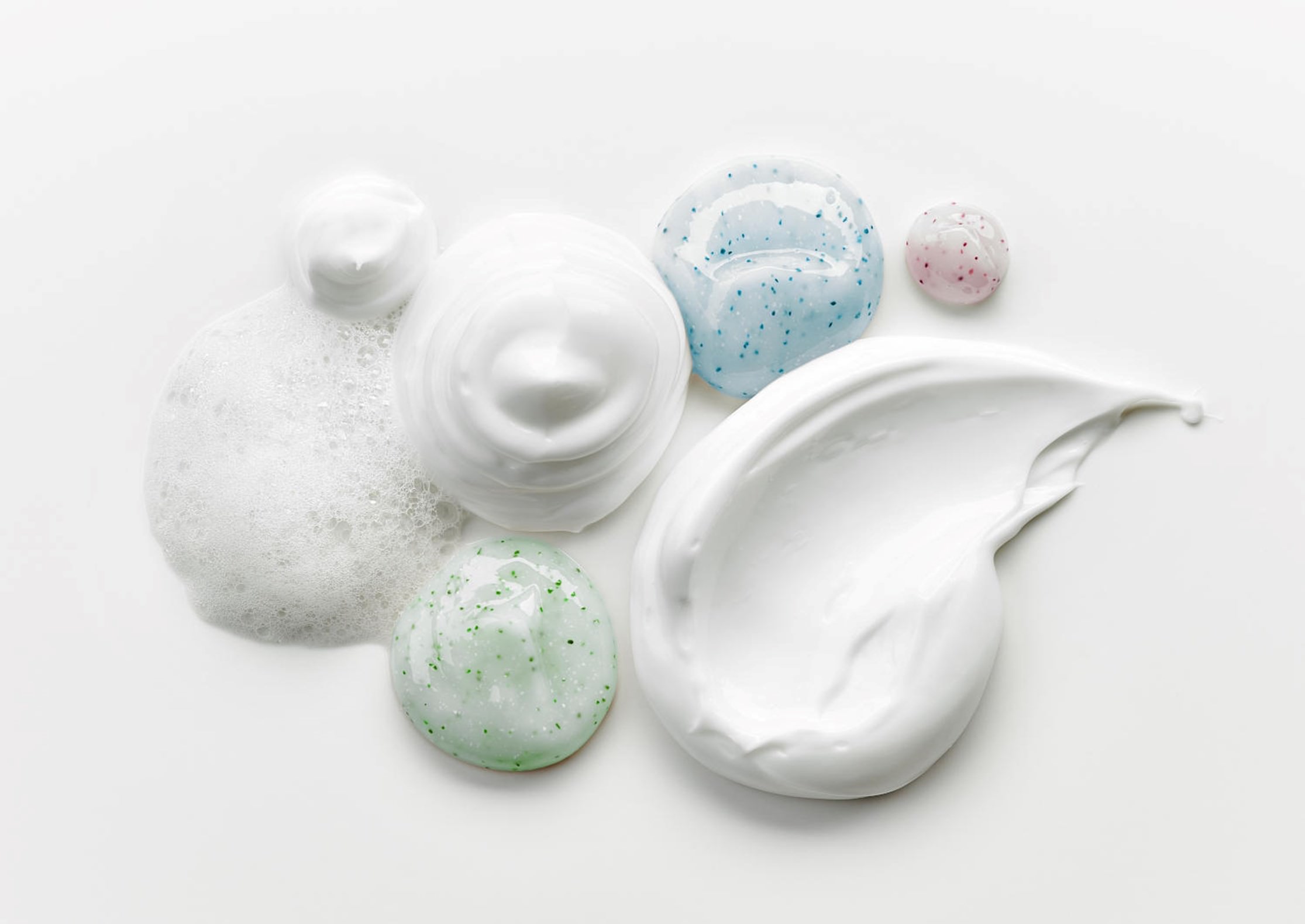Waxes are often used in cosmetics, and the professionals of the sector are more and more looking for natural waxes of high quality and stability, with a secured and steady provision and corresponding to sustainable development criteria. To offer a quality alternative to the main solutions that are present on the market, Sophim developed several natural cosmetic waxes with emollient and texturing qualities.
Differences between emulsifiers and texturing agents
Cosmetics formulations incorporate emulsifiers and texturing agents at the same time for different and complementary purposes.
Obligatory emulsifiers in cosmetics
Cosmetics are principally emulsions. Creams, shampoos, hair care products, sunscreens, make-up, face care products and baby lotions are most of the time made up of several elements:
- an aqueous phase, which contains water and water-soluble components;
- a lipid phase, which contains an oil or a fat and fat-soluble components;
However, the aqueous phase and the lipid phase are not miscible and will separate quickly. The fatty substance, which is lighter, will rise to the surface. Thus, your product will be unbalanced and will lose a (huge) part of its properties.
To boost the stability of an emulsion and insure an optimal sensoriality and texture, adding an emulsifier in the formula is mandatory.
An emulsifying molecule has very particular characteristics: it is amphiphilic and bipolar at the same time. One part is hydrophilic and attracts water, while the other part is hydrophobic and repels water. The hydrophilic part turns to the aqueous phase, while the hydrophobic part turns to the lipid phase. The emulsifier, at the oil/water interface, thus plays the role of a “link” between the two phases and brings a certain stability and homogeneity to the emulsion.
Texturing agents with many properties
The emulsifier is essential because it ensures the stability of an emulsion. However, it is not sufficient on its own to formulate a cosmetic product that meets the expectations of consumers. Texturing agents make it possible to obtain all the expected qualities:
- Structure (active ingredients, excipients, additives including emulsifiers, etc.);
- Rheological characteristics (viscosity, smoothness, etc.);
- Application performance (sensoriality, spreadability, etc.).
Each type of cosmetic product meets specific expectations. For example, a shampoo will favour a texturing agent with foaming properties, while a cream will favour a texturing agent with emollient properties.
Cosmetic waxes, emulsifiers or texturing agents
Waxes have been known for thousands of years for their cosmetic properties. They can be extracted from three main sources:
- Mineral sources (mainly petrochemical);
- Plant sources (carnauba, jojoba, candelilla, olive, etc.);
- Animal sources (beeswax).
Many customers are committed to an eco-responsible approach, which combines well-being, sensoriality and the natural origin of ingredients. This fundamental trend in cosmetics reinforces the interest of cosmetic brands for quality waxes of natural, vegetal or beeswax origin.
Not all cosmetic waxes share the same properties. For example, some waxes are excellent emulsifiers while other waxes are used for their thickening or emollient properties.
Waxes with emulsifying properties
Several waxes of natural origin have excellent emulsifying properties, and are therefore used in various cosmetic formulations.
Other waxes have co-emulsifying properties, and are used in combination with another emulsifier:
- Rice bran wax, a co-product obtained from the husk of the grain;
- Carnauba wax, extracted from the leaves of a palm tree, Copernicia cerifera;
- Soy wax, obtained by hydrogenation of soybean oil;
- Mimosa wax, extracted from the mimosa flower;
- Candelilla wax, extracted from a plant that grows in Mexico and southern Mexico;
- Beeswax, a product of beekeeping;
- Etc.
Waxes used as texturing agents
A wax can fulfil several roles as a texturing agent:
- Gelling, to make the mixture more viscous and reduce its mobility;
- Emollient, to soften and smooth the skin;
- Thickening, to give consistency to the texture;
- Adhesion agent, to reinforce the adhesion capacity of fats;
- Stabiliser, to stabilise the emulsion (co-emulsifier).
Depending on the type of cosmetic product, the method of application, the area of application or the sensoriality, you will be led to choose different natural waxes.
Focus on Phytowax, a natural emollient wax
Emollient qualities are particularly sought after in cosmetics. From the Latin “mollis”, the term emollient defines the capacity of an active ingredient to soften, smooth and make the skin’s surface layer more supple. An emollient wax has its place in many cosmetic products: creams, facial care, hair care, sun protection, make-up, etc.
Developed by SOPHIM, PHYTOWAX is obtained from the olive. Non-greasy and not much occlusive, it allows easy spreading and favours rapid penetration. With a wide range of melting points (28° C to 57°C), PHYTOWAX can be used in many cosmetic applications. Several grades are available to cover all your needs.
COSMOS approved and certified, China approved, this natural emollient wax meets the requirements of brands committed to sustainable and responsible cosmetics. A certified organic version is also available.
The role of waxes in solid cosmetics
Solid cosmetics, long confined to a niche market, are enjoying growing success. Practical and ecological, it appeals to consumers of all ages and socio-professional sensibilities.
Waxes are used to provide a solid dimension to the formula. They must have very precise characteristics to meet complex specifications. Thanks to its different melting points, PHYTOWAX can be integrated into many formulas for different purposes: skincare products, make-up, lip balm, solid body moisturiser, etc.
Work on texture and sensoriality is also a major challenge. Solid cosmetic products have to meet real challenges in order to offer optimal spreadability and a pleasant touch. PHYTOWAX, whose raw material is olive, offers both a unique touch and great sensoriality. It provides good hold and comfort during the application.
Ecological ambitions are very strong around solid cosmetics. Beyond the sole environmental dimension, natural ingredients are associated with positive values, such as the search for a certain closeness to nature and the attachment to environmental protection. Synthetic waxes are in real contradiction with the marketing positioning and consumer expectations in the solid cosmetics segment.
Two natural sources can be exploited: the animal source and the vegetal source. Waxes of vegetal origin have an advantage over beeswax. They can appeal to vegan customers, which is not possible with an ingredient obtained from beekeeping.
You want to develop a solid cosmetic formulation and are looking for the best ingredients? You will find our PHYTOWAX wax in My Softness Journey, a unique formulation proposed by SOPHIM. Get more information and request your sample by contacting our teams!
In addition to plant waxes, and to support brands committed to developing a solid range, SOPHIM has also developed VEGELINE. This vegetal emollient, an alternative to petroleum jelly, is based on a specific combination of castor oil and carnauba wax, and provides a sensoriality close to a butter, both non-sticky and soft to the touch. It is recommended for body care, hair care, lip care and sun protection. In solid formulations, VEGELINE will be an excellent binder between solids and liquids, providing excellent hold to the formula. Its qualities and properties have been demonstrated in the formulation of My Softness Journey, an intense moisturising stick for both body and face.
Take stock of your needs with Sophim
Are you looking for natural plant-based waxes for your cosmetic formulations? SOPHIM offers you an innovative range of natural waxes, alternatives to petroleum jelly and vegetal butters. You can contact your usual contact person at Sophim, or contact us by phone at (+33)4 92 33 17 17 or send us a message.
Category: Chemical expertise






